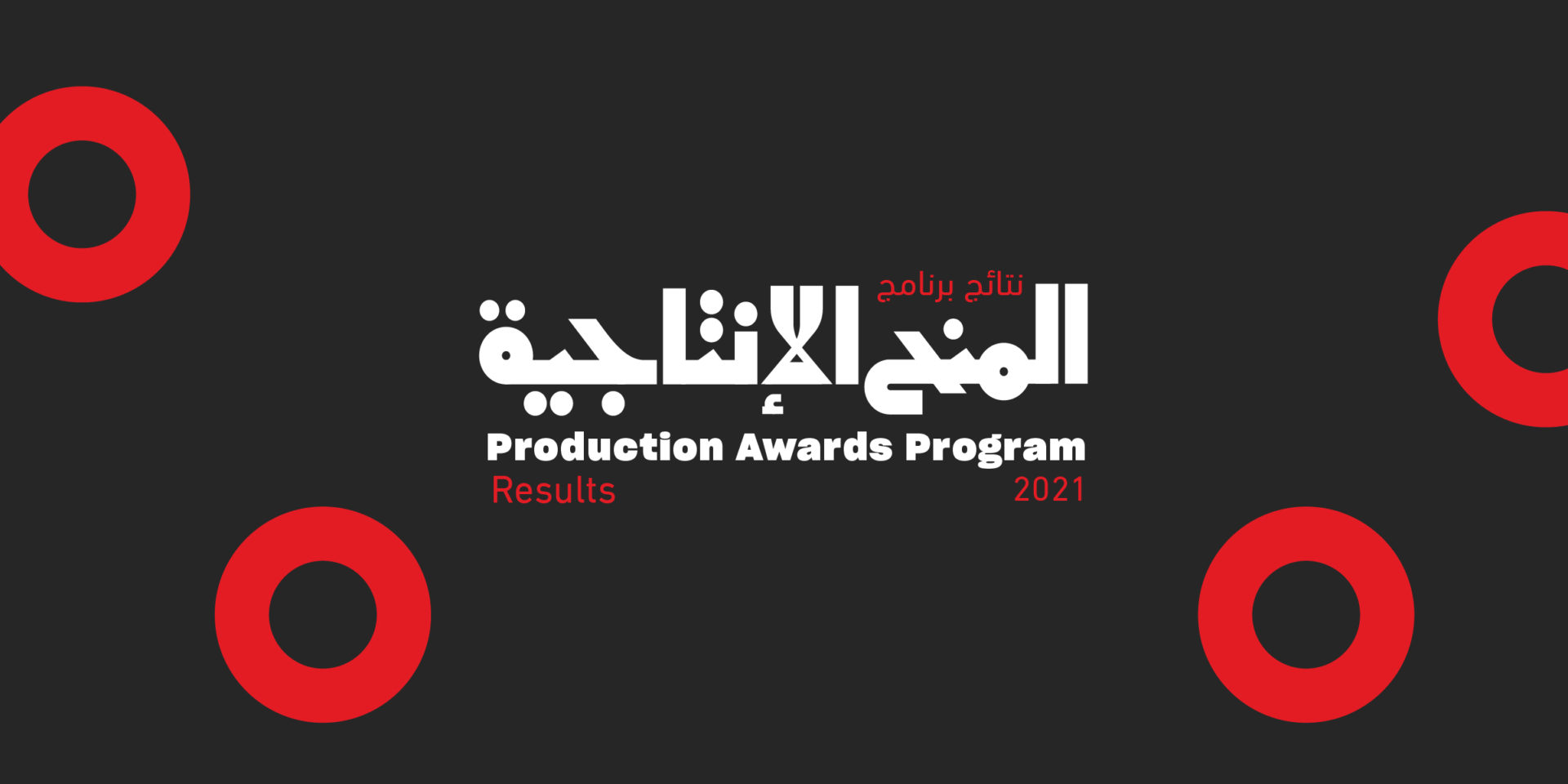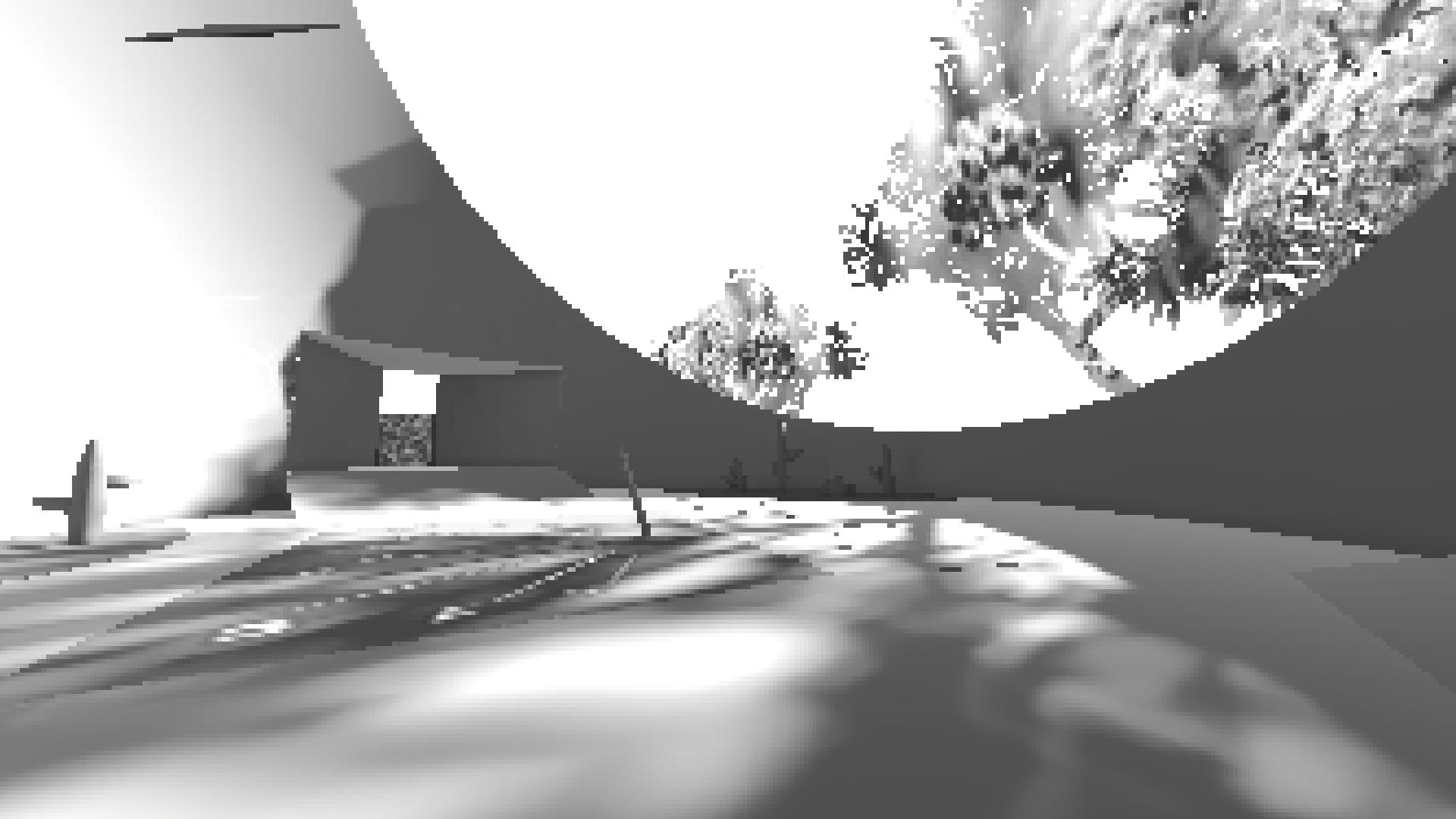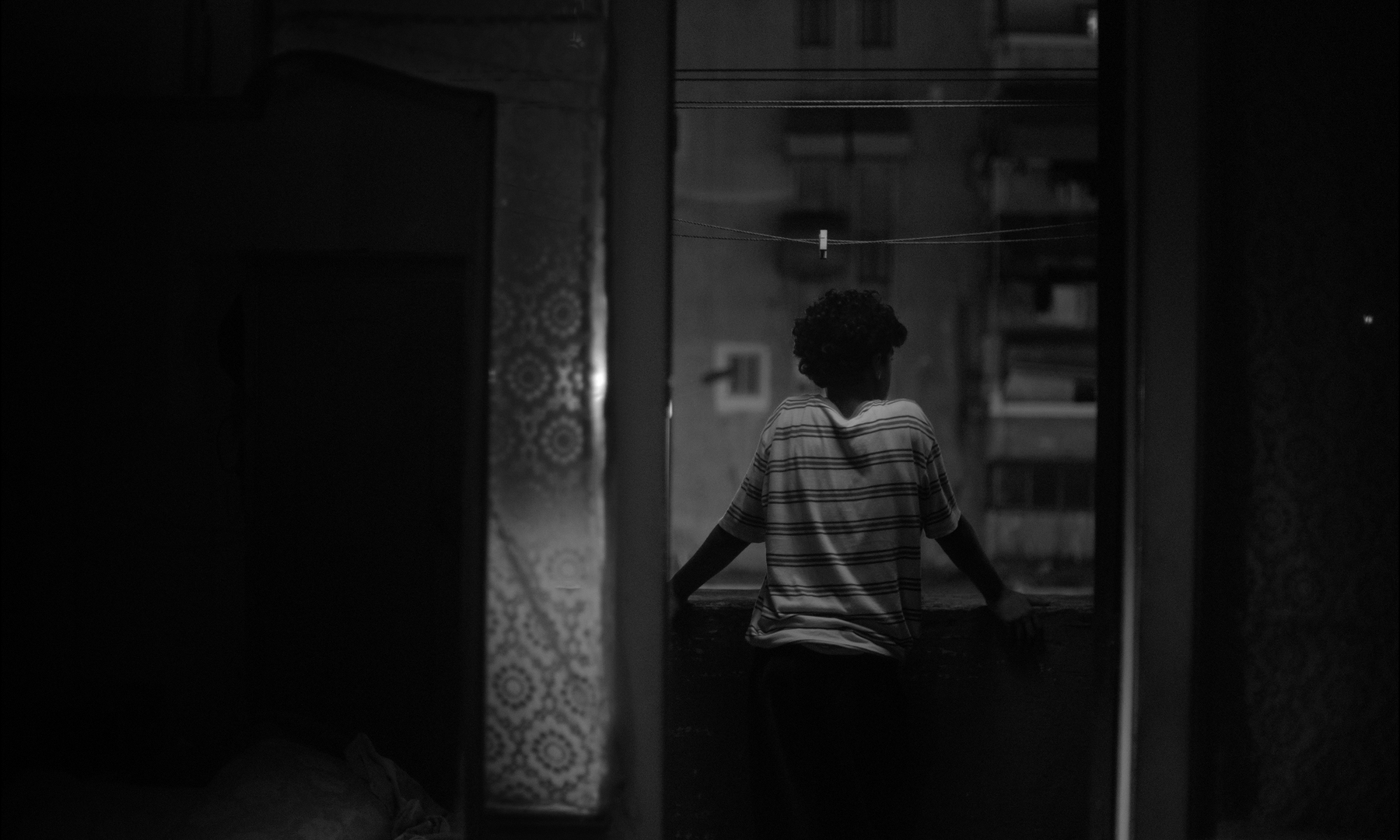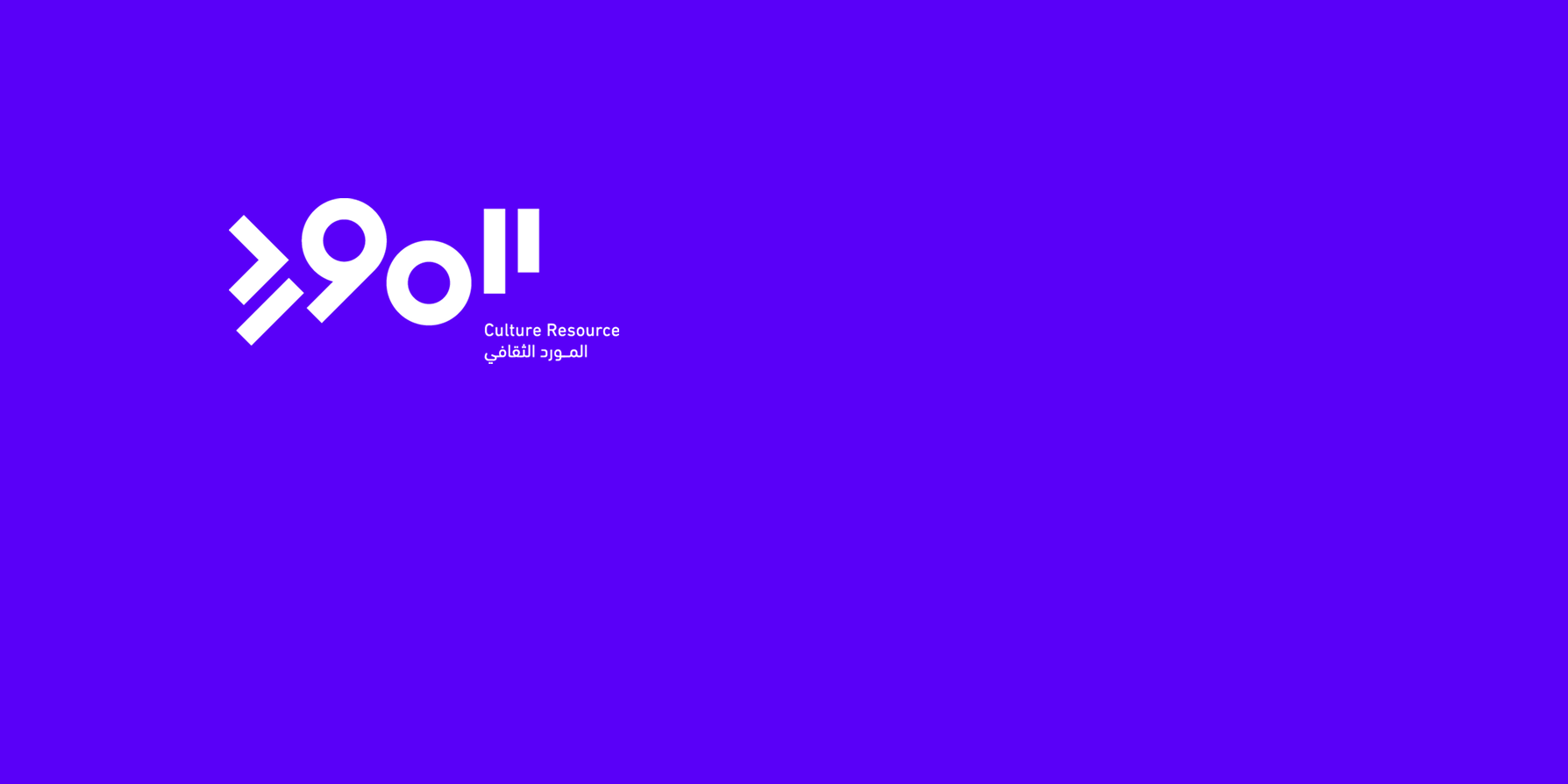Culture Resource is pleased to announce the grantees of the 2021 round of the Production Awards program which aims to promote and encourage a new generation of artists and writers from the Arab region by supporting their first creative projects in music, cinema, literature, visual arts and performance arts. The program team received 587 applications of which the jury selected 25.
Music
Ary Sarhan, Syria / buzuq player and singer
Album: “Lonely Road”
The album will consist of three songs and two instrumental pieces which will express the realities that Syrians have been experiencing for years. The lyrics are inspired by the complex and contradictory feelings and thoughts related to issues as survival, rescue, starting anew, the power of love, and rebellion after years of shattered dreams, depression and fear. The composition will interweave electronic and oriental music while the dramatic development of the songs will use an interplay between Arabic (Syrian dialect) and Kurdish. Accompanying video footage will be filmed in different parts of Syria, especially Damascus.
Bahaa Al Ansary, Egypt / composer
Micro Opera using the speaking piano
This ten-minute opera is a work in progress that Bahaa plans to eventually develop into a full-length 70-80 minute opus with the speaking piano as a central character. Two young people come across a child who has been transformed by a spell into piano so they hunt for some magical objects to free him. The objects are sensor devices that can control electronic musical sounds through movement and color.
Layale Chaker, Lebanon / violinist and composer
Staged Musical Performance: “In the Presence of Absence: In Memoriam Edward Said”
This 36-minute staged performance for string ensemble features electronic tape of previously unreleased recordings from piano recitals by Edward Said at the American University of Beirut and at Princeton University. The disembodied sounds of Said’s performance are intertwined with live music performed by 4 musicians who are gathered around a piano without a player, creating resonance and counterpoint to his voice and piano playing.
Omar Rahbany, Lebanon / composer and pianist
Album: “Piano Concertos 1”
The album features concerto for piano and strings. Concerto 1 fuses European Baroque and Indian Konnakol within an Arab/Lebanese musical spirituality. Omar decided to develop this mode in a second concerto which he has begun composing with an eye to facilitating the technical execution of the work which will be performed by the Passport Chamber Ensemble, which consists of a pianist, a string quintet and a percussionist.
Wanees Zarour, Palestine / composer
Album: “East Loop”
East Loop is a seven-member jazz/maqam ensemble that will create an album consisting of eight pieces/music videos recorded live. The ensemble has been working on an original concept for a subtle fusion of jazz and maqam that preserves the eastern modal system’s authentic elements. Six cameras will be used to film the pieces as the ensemble records them in the studio in order to illustrate how different instruments, traditions and improvisational styles are brought together to produce the fusion.
Jury:
Aida Niati, Tunisia / singer and composer;
Fathy Salama, Egypt / composer;
Fawaz Baker, Syria / musician and composer.
“So many of the proposed projects in the applications were not lacking in originality and openness to diverse cultures while taking rootedness in local culture as their core and their central premise. These projects reflected that rich and beautiful mosaic of Arab music and its facility for borrowing from and incorporating features of many musical genres from around the world.”
– Aida Niati
Cinema
Ayman Al Shatri, Iraq / director, screenwriter
Short fiction film: “Happy Hour in Baghdad”
Marwa is a young woman who, together with her friend Khaled, sells alcoholic beverages secretly in a city controlled by extremist militias who prohibit alcohol consumption. Khaled makes a mistake that exposes them and puts them in grave peril. He risks his own life to give Marwa a chance to flee to Baghdad.
Ameer Fakher Eldin, Syria / screenwriter and director
Postproduction of the feature-length fictional film “Passerby” (working title)
In the occupied Syrian Golan Heights, on the other side of the border of the Zionist entity, the life of an embittered and alcoholic young doctor takes a sudden turn when he emcounters a wounded soldier fleeing the war in Syria.
Karoline Markos Kamel, Egypt / writer and photographer
Postproduction of the full-length documentary: “The Lottery”
“The Lottery” is the autobiography of a middle class Coptic Egyptian family who plan to emigrate to the US by winning a well-known visa lottery. Karoline’s father, Markos, has been playing that lottery for 20 years without success, but he still wants his three children, Michael, Cherry and Karoline, to keep trying. They deal with this syndrome with sarcasm, laughter and intermittent quarrels. They blame their father for creating a constant expectation for a better life while doing nothing to make it happen. Karoline, in her film, presents an intimate portrait of her family and the complexities of their relations as they pursue a dream that would never materialize.
Marouan Omara, Egypt / director
Development of the Feature-length creative documentary: “The Missing Planet”
A creative documentary about a missing person, called Nour, who is one of thousands of people lost in a wave of missing persons, places and events in Egypt during the past ten years.
Marouene Labib, Tunis / director
Production of the mid-length fictional film: “Leni Africo”
In 2013, an Italian monk living in Tripoli, Libya, decides to help a group of migrants stranded in a cave in the middle of the desert. He hires a human trafficker called Omar and they set off in search of the cave. Some time later, “S”, one of the stranded migrants in the cave, resolves to make the trek through the desert to Tripoli. He takes the same path that the monk and Omar took, but in the opposite direction, and he comes across their tracks.
Jury:
Abbas Fahdel, Iraq / film director and producer;
Nadine Salib, Egypt / film director and producer;
Sofia Djama, Algeria / film director and producer.
“It was a great pleasure to read through the proposed projects which are as varied in their subject matter as they are in their artistic treatment. This testifies to the excellence of young Arab filmmakers and promises a bright future for Arab cinema.”
– Abbas Fahdel
“It was hard making the selections this year. Most of the projects proposed in the applications had a special intimacy and were unique in their narrative approach and visually rich. Many of them treated subjects of a high artistic and humanitarian value.”
– Nadine Salib
“Reading the proposed film projects filled me with joy at the vibrant future that lays ahead for Arab and Maghrebi cinema. If only there were as many grants as candidates!”
– Sofia Djama
Literature
Mohamed Elmesrati, Libya / writer, journalist and screenwriter
Short story anthology: “Years of the Barracks” (working title)
The seven short stories in this anthology are narrated by a 13 year-old boy during his transition from childhood to adolescence and from preparatory to secondary school. Through his eyes, we are introduced to his expanding environment from the neighborhood he was born in to the city he lives in. The stories are set in the early 2000s, when Libya relinquished its nuclear program and reconciled with the West, leading to the lifting of international sanctions. It was a period of rapid and sudden change in a society that had been completely isolated for more than three decades.
Rawan Ezzeddine, Lebanon / writer and journalist
Short story anthology: “The Task of the Survivors” (working title)
The tissue that binds these stories is an obituary page, revived and retooled by an Arabic newspaper in the hope of escaping the fate of many other printed periodicals. Rather than the conventional announcement of the passing of the dearly departed, the page offers more merciful alternative endings tailored to their relatives’ requests. The narrator/page editor receives so many letters a day that the obituary page becomes her reason to go on living. She develops a flare for manipulating or circumventing the facts of a brutal death in order to produce a pleasing story she can sell to the relatives. The deceased person’s loved ones may be impotent, but they do not give into it. They pick up the story’s thread to weave an alternative biography which is then presented in a manner that parodies the ostentatious style of contemporary obituary columns.
Souhaib Ayoub, Lebanon / writer and journalist
Novel: “The Hargoul Building”
A detective novel involving serial killings of women in an apartment building in Tripoli, Lebanon. It opens with the journey of the bedouin woman, Shamsa al-Sabea, from her escape from al-Abda refugee camp in 1960 to her disappearance in 2010. Her story is narrated by her 11 year-old grandson, Hassan al-Sabea, who is mute and does not attend school. But there is another, anonymous narrator. He introduces us to the lives of the building’s inhabitants and their relatives, and to the basement that the new resident, Hargoul, has turned into a mystery. An acerbic black humor prevails as the narrator leads us into a world populated by characters with strange mental disorders or congenital deformities, a world one might think could only exist on another planet.
Yazan El-Haj, Syria / writer and translator
Novel: “Fading Remains of the Tattoo”
A novel in four parts, each no larger than a novella and each dedicated one of four “seasons”: The Father, The Mother, The Daughter and The Fiancé. The events are set in four cities (Damascus, Deir ez-Zor, Daraa and Tartus) and in two eras: the 1980s and 2011-2015. Like the four concertos in Vivaldi’s “Four Seasons”, each central character takes their turn in the foreground while the others remain present but recede to the background. The result is a four paneled portrait of a Syrian family and their sociopolitical environment in two different eras.
Zizi Shousha, Egypt / poet and journalist
Novel: “Anonymous of Cairo”
The work takes the form of a fictional biography of women who left their homes in order to come to the capital to work or study. It probes the hidden sides of their lives: the difficulties they encounter, their social and psychological conflicts, the paths and means they pursue to achieve their dreams. Taking as its chronological starting point the first group of women who migrated from the countryside to Cairo to study, the novel observes the impacts of the social, political and cultural developments on their lives. In the process, it explores freedom, identity, individualism and other such crucial questions the West forced the women to face in the contexts of the dramatic tumult of their unique, intriguing and inspiring experiences.
Jury:
Ahmed Alfaitouri, Libya / writer and journalist;
Iman Mersal, Egypt / poet and writer;
Khaled Khalifa, Syria / novelist.
“There were many novel, serious and talented literary projects in the applications this year. If some were not selected, it is because of the limited number of grants. However, we hope their authors complete them and add to the achievements of modern Arabic literature.”
– Iman Mersal
“Most projects shared a focus on the Arab Spring and how it played out in the Arab Spring countries, which means that fiction writing is still drawn to grand themes. However, beneath that major heading, the treatments focused on displacement, refuge and the personal experiences of the writers, most of whom who live abroad. This effect of this is to suggest that the repercussions of the Arab Spring are solely exemplified by the refugee and the life of migration and loss. We also noted that the novel is still the main form of literary expression, to the degree that many playwrights and poets now want to turn to fiction.”
– Khaled Khalifa
Visual Arts
Assem Hendawi, Egypt / visual artist
“Everything Under Heaven II” (working title)
A video installation depicting Bir Tawil, an uninhabited desert region on the Egyptian-Sudanese border, as a space that exists outside of time. The project draws on the history of this region as a heterotopia that emerged after the colonial era and that forms a fertile environment for diverse sociopolitical conceptions of the future. As a catalyst for future speculation, Bir Tawil harbors latent founding narratives for a parallel mythology that favors technologies that could repurpose this area independently of the hegemony of global capitalism and Western centrality. As it weaves such odd threads together, applying an awareness of post-colonial impacts, the project creates an alternative narrative that contemplates the future of the nation state, technology and the post-scarcity world.
Aroussi Tabbena, Tunisia / painter and comic books author
“Cross Dog”
A 30-50 page long comic book around “Shawqy,” a young Tunisian in his late twenties who experiences an extraordinary incident and is fired from his job. The situation worsens in ways that affect his mental wellbeing due to family pressures, a rigid conservative environment and reactionary customs. As a result, he begins to hallucinate and suffer acute existential conflicts.
Bernard Hage, Lebanon / graphic designer
“Anatomy of a Hummus Plate”
A collection of sociopolitical cartoons that serves as a humorous yet incisive introduction to Lebanese society. This illustrated book seeks to expose what lays beneath the first layer of Lebanon’s famous hummus, from hospitality and being able to swim and ski in the same day to corruption and hardship.
Fai Ahmed, Saudi Arabia / graphic artist
“Untitled Album” (summer 2020)
This bilingual art book attempts to preserve the artist’s uncaptured memories by re-picturing some of the most important ones. An untitled album stimulates attempts to rebuild unvisualized memories.
Nour Shantout, Syria / visual artist
“Searching for the New Dress”
This artistic research project examines Palestinian embroidery in the Shatila Refugee Camp after the siege of the Yarmouk Camp and how it was influenced by the arrival of embroiderers from Syria. The research involves interviews with embroiderers in many centers and small enterprises in Shatila in order to identify designs that reflect the changes in Palestinian embroidery as an art (choice of pallet, fabrics, patterns) and as a profession. The project poses the following questions: If a new dress were made after flight from siege of Yarmouk, what would it look like? What colors and fabrics would be used?
Jury:
Fatma Kilani, Tunisia / curator and cultural manager;
Khalid Albaih, Sudan / visual artist and cartoonist;
Yazid Anani, Palestine / visual artist and curator.
“I welcomed the quality and diversity of the proposed projects and the level of artistic and social commitment they represent. Many of them explore memory and identity and, through various media, they aspire to document and preserve material and non-material heritage.”
– Fatma Kilani
“As difficult as it was to select the grantees for this round, it was a great delight to get to know so many talented artists from the region. Most of the projects, from the Mashreq to the Maghreb, capture the reality of the region through artistic works and projects that have the potential to fire the imagination, inspire questions and the search for answers, and affirm to the viewer the unity of the region, at least at the level of interacting with the complexities of the past and the challenges of the future.”
– Khalid Albaih
“This year’s contributions, amidst the devastating worldwide health, political, and social dilemmas, have proven how art is capable of imagining hope in these dark times. The artists managed to create different critical lenses and portals to the future through their reflections and works. They gave us the opportunity to examine their works at the personal, public and collective levels, as they attempted to stimulate our individual independent will and give new direction to social change.”
– Yazid Anani
Performing Arts
Bashar Murkus, Palestine / writer and theater director
Theatrical performance: “And They Will Be Taken from You”
A theatrical performance, on stage, that observes how war and states of emergency transform women into material for tragedy. The work presents, in the form of a modern tragedy, women who have lost their children in war and strife. Some are women who are suffering their loss among us today; others are mothers from the past, led by Hecuba, the mythological Trojan queen who lost her 19 children in the Trojan war. Rather than treating a dramatic plot, this project attempts to condense the state of loss in visual dramatic structures shaped by the psychologic and physical impact at the moment a mother loses her son and its sociopolitical repercussions.
Ghida Hachicho, Lebanon / performer and choreographer
Dance performance: “Studies on the Movement of a Group”
The project takes as its starting point the group as it emerges and begins to use forms of authority, order and harmony. In the process, its members negotiate to move in a certain direction, whether by design or spontaneously. To form a group is to attempt to bridge differences and create a single body. It vibrates to a rhythm measured from one body to the next, and in accordance with reciprocal gestures and movements in various directions. Its thrust is the sum total of the differences within the impulse of the single body.
Ibrahim Jumaa, Syria / theater director
Performance art project: “Echo”
This participatory performance art production is based on the exchanges of correspondence between a Syrian director and a Tunisian performer. It examines the importance of the written message as an artistic medium and the need for works to preserve imagination in a world dominated by the increasingly rapid onrush of taped sounds and videos. Two cities – Tunis and Damascus – are united by words. The performance expresses this meeting and the changes in our cities over the years by means of the body and individual self of each of these two artists.
Othman Selami, Morocco / choreographer and dancer
Dance performance: “HITIST-IN”
This solo dance performance attempts to discover the secret side of young loafers who kill time leaning on walls. It summons the impetus hidden behind their outward indifference and experiments with the sensitivities behind their gazes. The project is a site specific dance performance: it follows the paths of the “wall-leaners” through the streets and probes their relationship with the wall by retracing the patterns and shapes they form unconsciously. Through the reproduction of a series of twitches, jerks and contortions, it sheds light on these inert bodies in the shade which have become a fundamental appendage to urban architecture.
Sahar Damoni, Palestine / choreographer
Dance performance: “Eat Banana and Drink Pills”
A contemporary dance project on abortion among unmarried Arab women. Focussing on the physical and emotional experience and how it unfolds in its social social contexts, the work analyses the relationship between the choice of abortion and such phenomena as shock, stigma, and physical and social violence and abuse.
Jury:
Hanane Hajj Ali, Lebanon / actress, theater director and cultural activist
Saeed Kabeel, Egypt / theater director and cultural director
Taoufiq Izeddiou, Morocco / choreographer, performer and researcher on contemporary dance
“A connection with the current sociopolitical condition prevails in the general background of many of the applications, but the connection avoids being direct thanks to the efforts to explore conceptual approaches based on research, experimentation and innovation in the artistic language applied. Such efforts were reinforced by the attention to the intersections between scientific research and diverse forms of artistic expression. At another level, self-quarantine has apparently stimulated virtual collaborations across borders as a preliminary and basic stage of the conception of a project. However, that very self-quarantine did not inspire proposals for projects organically dependent on virtual platforms, revealing the continued presumption of the need for live performances. While the projects ranged from the classical to the postmodern, they shared a determination to break stereotypical narratives and engage multiple voices in a single discourse. Finally, it was remarkable that many of the projects received very close scores, which presented the jury members with a great challenge, albeit one governed by hope.”
– Hanane Hajj Ali
“This was an exciting experience which helped to familiarize us with what is going on in the minds of independent professional artists in several Arab countries. The topics addressed were diverse, ranging from powerful social issues and iconic ideas to attempts to revive heritage in various forms. Contemporary dance projects occupied the greatest share of the proposals, many of which were solo projects. Still, despite the diversity in subject matter and ideas, we detect the impact of the contemporary period, which exceeds the past ten years, on the proposed projects, as was reflected in ideas associated with physical and psychologic alienation, isolation and the inability to communicate properly, as well as women’s causes. The applications varied in their ability to express such ideas and issues, and to explain their artistic visions and how diverse artistic tools would be marshaled to bring those visions to life. Nevertheless, all the projects had an important element in common: honesty.”
– Saeed Kabeel





